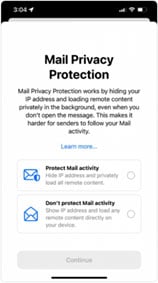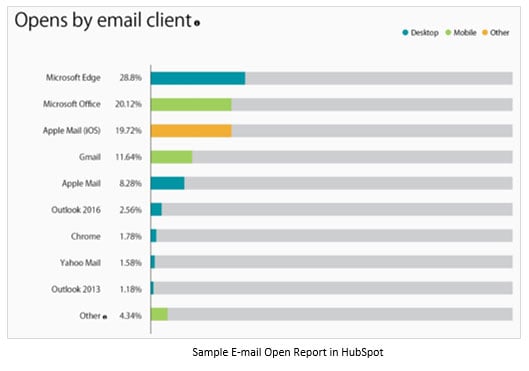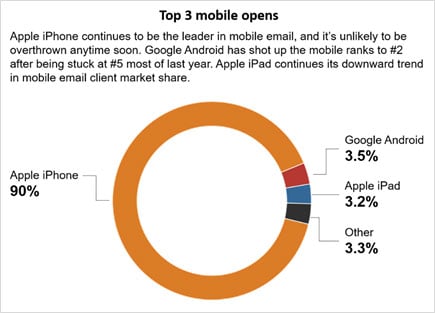
Apple's recently announced iOS 15 software update, set to be released this fall, contains two privacy protection features that are going to meaningfully change email marketing.
 Apple's Mail Privacy Protection feature will provide users the option to download content privately without disclosing their IP addresses. This will result in the inability to track email opens and forwards as a metric of measure. Apple will also be masking user IP addresses. This will block a sender's ability to learn a user's location or use the address to build user profiles.
Apple's Mail Privacy Protection feature will provide users the option to download content privately without disclosing their IP addresses. This will result in the inability to track email opens and forwards as a metric of measure. Apple will also be masking user IP addresses. This will block a sender's ability to learn a user's location or use the address to build user profiles.
The iOS 15's Mail Privacy Protection feature will also block marketers' ability to view emails opened by Apple users who have opted-in to its protection feature. Users on Android and desktop devices, however, will still be trackable.
How big of an impact this will have on your company's email marketing will depend on what percentage of your contacts are opening your emails via Apple devices vs. desktop and android devices. To determine this, review your email service provider's (e.g., MailChimp, HubSpot, Constant Contact) reporting metrics.

So far in 2021, 43% of emails have been opened on mobile devices vs. 19.4% on desktops. Of the emails being opened on mobile devices, 90% are opened on Apple iPhones and 3.2% on Apple iPads -- leaving just 6.8% to Google Android and other devices.

The Mail Privacy Protection feature on iOS 15 is not enabled by default. To activate it, users will need to opt-in manually. This will likely reduce the feature’s activation rate, so it will be interesting to see how many people will even know to take this step. Regardless, marketers should expect to start seeing a meaningful decline in open rates and should no longer rely on them as a reliable metric.
Secure a Free SEO Report to Find Out the Most Important Keywords for Your Business
Hide My Email is another new feature on Apple’s soon-to-be-released iOS 15. It is designed to prevent the spread of people’s email addresses across the web. The feature creates a randomized Apple-generated proxy email address in place of the user’s actual email address. Apple will then forward any emails from the proxy address to the user’s personal email account.
Hide My Email seems poised to unleash a domino effect of issues for marketers. It starts with the problem of there being no easy way to determine if a new email sign-up is a legitimate address or one randomly generated by Apple. This will likely cause deliverability problems, as subscribers may quickly delete the Apple-generated email address from their in-boxes. This will increase bounces and then potentially trigger ISPs, to potentially alter deliverability. (Reputable email service providers automatically purge “hard” bounces, removing their impact on ISPs.)
Like many marketers, you are probably wondering what you should be doing to maximize your email marketing effectiveness.
If you're looking for help developing and/or implementing a strategic email marketing campaign that connects with your audience, boosts website traffic and secures more qualified leads, email Jonathan Ebenstein.

These Stories on Email Marketing
Have lingering questions after checking us out? We’re here to help! And don’t worry—we won’t go into sales-stalking mode. So please feel comfortable filling out the form below and take us up on our offer to help.
About Us
Our Work
Contact
Strategic 7 Marketing
6685 Beta Drive
Cleveland, OH 44143
440.772.0186